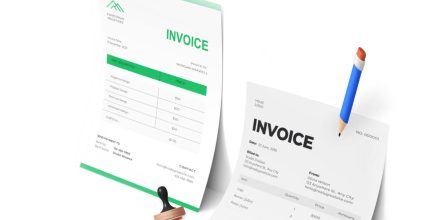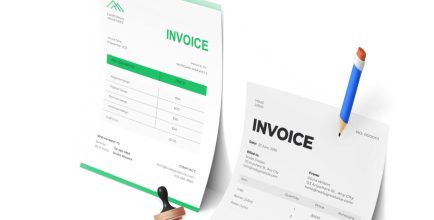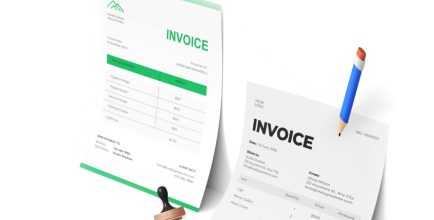Understanding the Income Statement (Profit and Loss Statement)
The income statement, also known as the profit and loss statement (P&L), profit and loss account, or simply P&L, plays a crucial role in illuminating a company’s financial performance. It functions as a financial map, detailing whether your business has navigated towards profitability or veered into loss territory over a specific period.
Without this vital document, entrepreneurs would be navigating their business’s financial landscape blindfolded, unable to gauge profitability. It’s a tool that not only discloses earnings and expenditures but also forms the basis for making informed and strategic decisions. The standard duration covered by an income statement usually spans one fiscal year, offering a comprehensive view of a company’s financial activities throughout that period.
Breaking Down the Income Statement Components
The structure of an income statement is vital for understanding a company’s financial viability over a given period, typically one fiscal year. It comprises several key elements that collectively offer a snapshot of the financial activities and health of the business. Here’s a closer look at what constitutes an income statement:
Revenue (or Sales)
The pinnacle of the income statement is your revenue, or sales, reflecting the total income generated from goods or services sold within the financial year. Discounts offered, such as a 10% Black Friday sale on a $100 t-shirt, would adjust this amount, resulting in a net sales figure of $90.
Cost of Goods Sold (COGS) or Cost of Sales
Directly associated with the production of the goods or services sold, COGS illustrates the expense of manufacturing or procurement. For a store selling electronics, COGS would only include the cost of electronics sold within the year, not those purchased. In service industries like consulting, these are often referred to as direct costs, covering expenses directly tied to service provision.
Gross Profit
Calculated by deducting COGS from your total revenue, gross profit represents the direct profitability from your business’s trading activities.
Selling, General, and Administrative Expenses (SG&A)
This section encompasses the operational expenses not directly tied to sales, including salaries, rent, office supplies, marketing, and utilities, among others. They facilitate trading activities but are essential for overall business operations.
Operating Income
This figure represents the profit earned from core business operations, factoring in all revenues and expenses necessary for business functioning.
Finance Costs
Excludes expenses related to financing, such as interest on loans, from the SG&A expenses, pinpointing the costs tied to the procurement of goods or services.
Net Income
After accounting for finance costs, what remains is the net income or net loss, famously known as the bottom line, signifying the total earnings of the company over the fiscal year.
Consideration of Income Taxes
Notably, income taxes are often not included for small businesses that are not structured as C-corporations, as the profits are transferred to the owner and taxed individually, bypassing corporate tax complexities.
Understanding the Balance Sheet
The Balance Sheet, also recognized as the Statement of Financial Position, stands as a crucial financial statement revealing the financial health of an organization at a specific point in time, often marking the conclusion of a fiscal year. It is instrumental in portraying a company’s financial stability by outlining three fundamental categories: assets, liabilities, and equity.
Components of a Balance Sheet
- Assets: Represent the valuable resources owned by the company that hold current or future economic benefits. Assets are categorized into:
- Current Assets: These are assets that the company anticipates converting into cash within the span of the upcoming year, including items such as inventory and money owed by clients (accounts receivable).
- Non-Current Assets (Fixed or Long-Term Assets): Assets that are not readily convertible into cash, including property, plant, equipment, and intangible assets like patents.
- Liabilities: These reflect the company’s debts or obligations to other parties that must be paid off. Liabilities are split into:
- Current Liabilities: Obligations due within a year, including accounts payable and short-term loans.
- Non-Current (Long-Term) Liabilities: Debts or obligations due beyond one year.
- Equity (Owner’s Equity or Shareholder’s Equity): This represents the owner’s interest in the company after liabilities have been subtracted from assets, showcasing the net value that belongs to the shareholders.
Importance and Purpose
The Balance Sheet is fundamental for stakeholders, including lenders, investors, and potential buyers, to assess the company’s net value or worth. It not only provides a snapshot of the financial status at a given moment but also highlights the business’s net worth through the lens of owner’s or shareholder’s equity. This equity reflects the residual value belonging to the owners after all liabilities are addressed.
Income Statement vs. Balance Sheet: Understanding Their Unique Functions
For those seeking insights into their business’s performance over a designated period, such as annually, monthly, or quarterly, the income statement is the go-to financial report. It meticulously details whether the business has thrived in profitability or encountered losses during that time frame.
Conversely, the balance sheet offers a snapshot of your business’s financial standing at a specific moment in time, essentially revealing its net worth or value since inception. This distinction is crucial for identifying not just how the business has operated over time with the income statement but also for understanding its current financial health and value through the balance sheet.
Conclusion
Both the income statement and the balance sheet serve as foundational pillars in the realm of financial reporting, each offering distinctive insights into the company’s financial affairs. The income statement unfolds the story of a business’s operational performance over a period, highlighting its ability to generate profit through normal business activities.
Meanwhile, the balance sheet provides a static snapshot of the financial health at a point in time, underscoring the balance between what the company owns versus what it owes. Together, they provide a comprehensive view of the company’s financial robustness, guiding stakeholders in making informed decisions about the business.
Understanding and effectively using these financial statements can empower business owners, investors, and other interested parties to gauge a company’s financial standing accurately.



